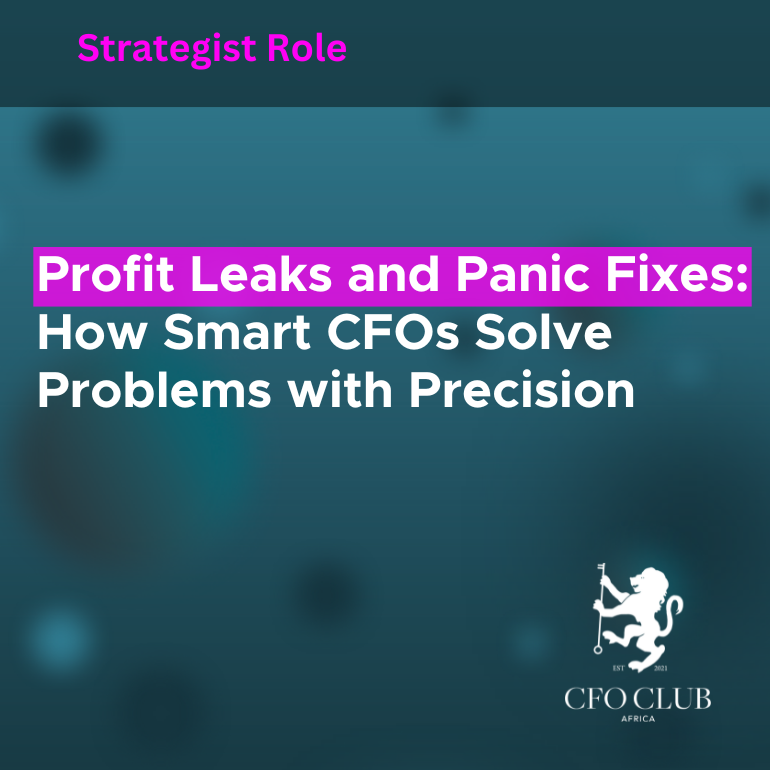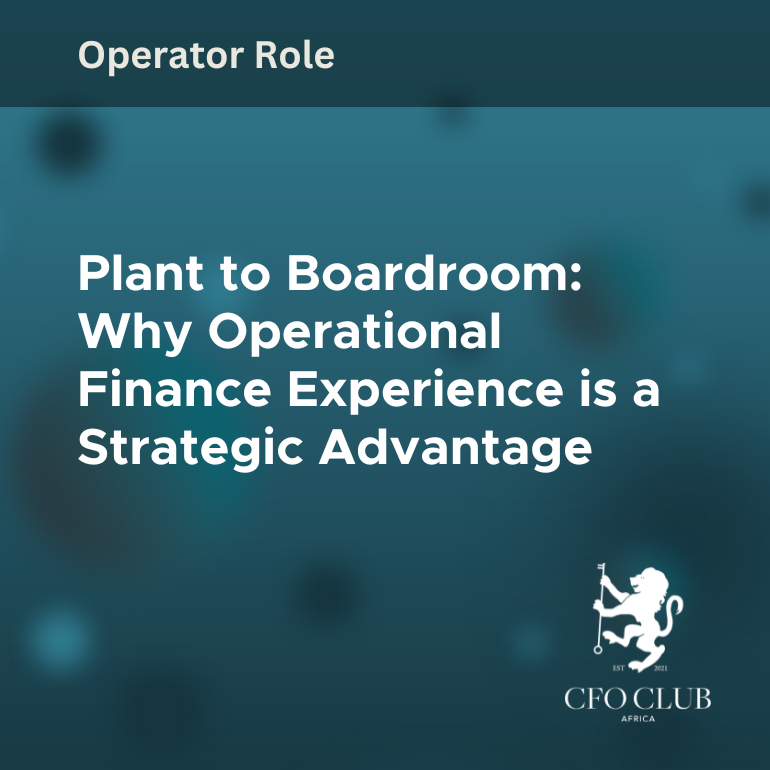Profit Leaks and Panic Fixes: How Smart CFOs Solve Problems with Precision
Profit Leaks and Panic Fixes: How Smart CFOs Solve Problems with Precision
In the world of financial management, being a CFO means far more than just numbers on a spreadsheet. You are the strategist who ensures your company stays resilient, profitable, and compliant – even when everything else is uncertain. But navigating complex financial problems isn’t just about being good with numbers; it’s about using those numbers to make smart, impactful decisions.
Why Financial Problem-Solving Matters More Than Ever
Let’s be clear: Financial problem-solving isn’t just another skill for a CFO – it’s the skill. Whether it’s tackling cash flow issues, managing regulatory compliance, optimising tax structures, or making high-stakes investment decisions, your ability to solve problems with precision is what sets you apart.
But here’s the catch – not every problem is obvious, and not every solution is immediate. The real challenge is knowing how to spot issues early, diagnose them accurately, and implement solutions that actually work. And that’s what we’re here to cover.
Identifying the Problem: Look Beyond the Symptoms
One of the biggest mistakes even seasoned CFOs make is treating symptoms instead of solving root problems. Cash flow issues? Sure, you could push for faster collections – but what if the real problem is inefficient cost management? Drop in profitability? Cutting expenses sounds right – but what if your pricing strategy is outdated?
A logistics company struggling with cash flow thought the problem was slow customer payments. The CFO dug deeper and found the real issue was poor inventory management, leading to unnecessary storage costs.
Always start with a root cause analysis. Ask why. Then ask it again. Use techniques like the 5 Whys Method, where you keep asking “why” until you uncover the root cause.
Strategic Diagnosis: Data, Analysis, and Insight
Precision problem-solving means being data-driven. For a CFO, this means going beyond the financial statements. It means understanding the story behind the numbers.
Key Techniques for Precision Diagnosis:
- Variance Analysis: Identify which costs or revenues deviate from expectations and why.
- Trend Analysis: Spot recurring issues by examining financial patterns over time.
- Scenario Planning: Model best, worst, and most likely outcomes to prepare for uncertainty.
- Ratio Analysis: Compare performance metrics against industry standards or historical data.
A retail chain faced declining profits. Instead of blindly cutting costs, the CFO used a profitability analysis to identify underperforming product lines. By focusing on profitable categories, they increased margins without sacrificing sales.
Don’t just look at the numbers – ask what they mean. What is the story they are telling?
Crafting Solutions: Practical, Impactful, and Profitable
Once you understand the problem, it’s time to act. But this isn’t just about quick fixes – it’s about sustainable solutions.
Three Core Areas of Solution Crafting:
1. Cost Management: Automate where possible, negotiate supplier terms, and optimise processes.
2. Revenue Growth: Identify underutilised revenue streams, upsell existing customers, or explore new markets.
3. Risk Mitigation: Diversify suppliers, hedge currency risks, or strengthen internal controls.
A mid-sized manufacturing company struggled with rising raw material costs. Instead of simply absorbing the costs, the CFO renegotiated supplier contracts, introduced alternative materials, and leveraged bulk buying. The result? A 12% reduction in production costs within a quarter.
Frame every solution in terms of impact. How much will this save? How much will this earn? Focus on measurable outcomes.
Communication: Making Solutions Stick
The best solution is worthless if your team doesn’t understand or support it. As a CFO, your role is also to communicate effectively – whether to the board, to your finance team, or across departments.
Effective Communication Strategies:
- Clarity: Keep it simple. Avoid jargon. Speak in terms of outcomes.
- Relevance: Connect the solution to the pain point.
- Confidence: Show that you have a plan and the expertise to execute it.
A CFO at a manufacturing firm needed to cut costs without hurting quality. They didn’t just announce a “cost reduction initiative.” Instead, they explained how optimising supplier terms would protect jobs and ensure product quality.
Make your message clear, compelling, and connected to business outcomes.
Continuous Monitoring: Solving Problems Isn’t One-and-Done
Effective financial problem-solving doesn’t end when a solution is implemented. You need to track performance, measure results, and be ready to pivot if the solution doesn’t deliver. Precision isn’t just about getting it right once – it’s about staying right.
How to Monitor Solutions Effectively:
- Set Clear KPIs: Identify the specific metrics that will measure success (e.g., cost savings, profit margin improvement, working capital turnover).
- Regular Reviews: Conduct monthly or quarterly performance evaluations to ensure the solution is working.
- Adjust Rapidly: If the metrics indicate a problem, be ready to tweak the strategy.
After implementing a new financial reporting system, a CFO noticed that the reports were consistently delayed. Upon investigation, they found that staff needed additional training. A quick training session fixed the issue.
Make monitoring part of your problem-solving process. A solution that isn’t monitored is a problem waiting to happen.
Precision Problem-Solving in Action: A Case Study
A mid-sized tech company was facing declining profit margins despite increasing sales. The CFO discovered that the company’s cloud services were priced too low compared to competitors. By conducting a market analysis, they adjusted pricing, introduced value-added packages, and saw a 20% profit increase within six months.
Why This Worked:
- They identified the root problem (pricing, not sales volume).
- They used data (market analysis) to guide their solution.
- They communicated effectively with the sales team, ensuring they could confidently present the new packages.
- They monitored the impact and adjusted as needed.
Conclusion: Mastering Financial Problem-Solving
Being a CFO isn’t just about managing finances – it’s about leading with precision. When you can solve financial problems with clarity and confidence, you become indispensable to your organisation.
But remember, precision problem-solving is a mindset. Diagnose accurately, act strategically, and measure relentlessly. That’s how you turn challenges into opportunities.
The CFOs who master financial problem-solving are the ones who not only protect their companies but drive them forward. Don’t just manage problems – solve them with precision.





